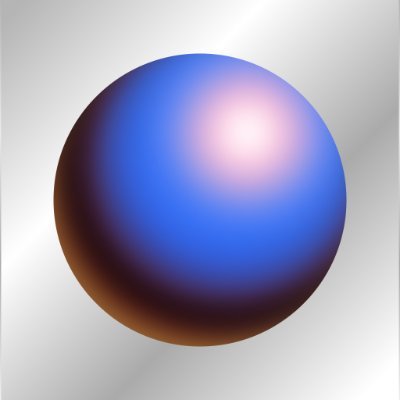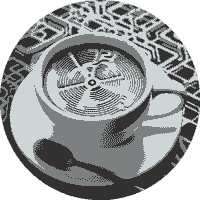Coin-related
Price calculator
Price history
Price prediction
Technical analysis
Coin buying guide
Crypto category
Profit calculator
What is Polygon (MATIC)?
Polygon basic info
Welcome to Bitget - the world’s fastest growing crypto derivatives trading platform.
As one of the most popular chains, Ethereum has been a prosperous ecosystem, providing different money-making opportunities like tokens, De-Fi, Dao, Dapps, Game-Fi, Move-to-Earn, NFT…
Thanks to Ethereum, so much money has been made. However, the expensive gas fee on Ethereum has stopped people from participating in the Blockchain development.
Also, the Ethereum network was considered too slow. It can only handle 30 transactions per second. Do we have an alternative? A cheaper and faster Blockchain network? A better solution is Polygon.
What Is Polygon And Its Crypto, MATIC?
Polygon is a scaling solution that runs alongside the Ethereum Blockchain, which is called “layer 2” or “sidechain”. Compared to the Ethereum network, Polygon allows faster transactions and lower fees.
MATIC is Polygon’s native cryptocurrency, like the relationship between ETH and Ethereum, which is used for paying the gas fees, staking, and governance.
What Is The Problem Faced By Ethereum? How Does Polygon Improve It?
Ethereum is facing the following three challenges:
-
Low transaction speed: Only 30 transactions available per second
-
High gas fee: As there’s only 30 transactions available per second, if you want to be quick, you have to pay a higher gas fee.
-
Limited Usages: For developers, there are limited options to develop a Dapp.
Polygon allows Dapps on the Ethereum network to solve the problems mentioned above. Polygon is a POS (Proof of stake) chain with a wider variety of scaling solutions.
It acts like an additional pathway for the Dapps on the Ethereum network with a higher speed of calculation. Then send the data back to the main chain to finish verification.
This scaling solution allows developers to have faster ways to develop innovative applications.
What Can MATIC Do?
There are three major usages of Polygon:
-
Paying the gas fee: Similar to ETH, MATIC is used to settle the gas fee that supports the operation of the Polygon network.
-
Governance: The MATIC holders are able to participate in the governance of Polygon.
-
Staking: If you want to earn an extra income, you can do staking. But please beware of the risk.
How Can I Buy MATIC?
"Polygon has successfully enhanced the Ethereum ecosystem, the second largest Blockchain network, by increasing the transaction speed and lowering gas fees. It makes Ethereum become more sustainable.
If you consider Polycon a potential Blockchain project, you can start to find out more about its native token MATIC.
According to CoinMarketMap, MATIC tokens are released on a monthly basis. MATIC currently has a circulating supply of 4,877,830,774 MATIC tokens and a max supply of 10,000,000,000 MATIC tokens.
The remaining MATIC tokens are distributed as follows:
-
Team tokens: 16 percent of the total supply.
-
Advisors tokens: 4 percent of the total supply.
-
Network Operations tokens: 12 percent of the total supply.
-
Foundation tokens: 21.86 percent of the total supply.
-
Ecosystem tokens: 23.33 percent of the total supply.
According to the release schedule, all the tokens will be released by December 2022.
The simplest way to buy MATIC is through cryptocurrency exchanges. You can establish an account with an exchange like Bitget, and then fund the account with fiat by credit card, Apple pay and Google pay.
Click here to check out the latest price of Polygon.
MATIC supply and tokenomics
Token utility
$POL has three primary utilities:
- Staking:Validators in Polygon 2.0 need to stake $POL in order to participate in the validation process.
- Validator Rewards:Polygon 2.0 will provide a predetermined amount of $POL as reward to validators. The reward allocation can be adjusted based on future community governance decisions.
- Transaction Fees:Validators can validate multiple chains within the Polygon ecosystem and receive transaction fees in the form of $POL.
Token governance
$POL can be used for governance purposes. Polygon 2.0 will introduce a new community treasury managed by $POL holders, aimed at supporting the development of the Polygon ecosystem.
Links
What is the development prospect and future value of MATIC?
The market value of MATIC currently stands at $474.76M, and its market ranking is #112. The value of MATIC is widely recognized by the market. When the bull market comes, the market value of MATIC will likely continue to increase.
Moreover, if MATIC can play a greater role in practical applications, such as Polygon builders fully leveraging the potential of MATIC, partnering with more businesses, and increasing its user base, the long-term value of MATIC will be significantly enhanced.
Is MATIC worth investing or holding? How to buy MATIC from a crypto exchange?
How to get Polygon through other methods?
What is Polygon used for and how to use Polygon?
Polygon Wiki
Learn about other cryptos









































